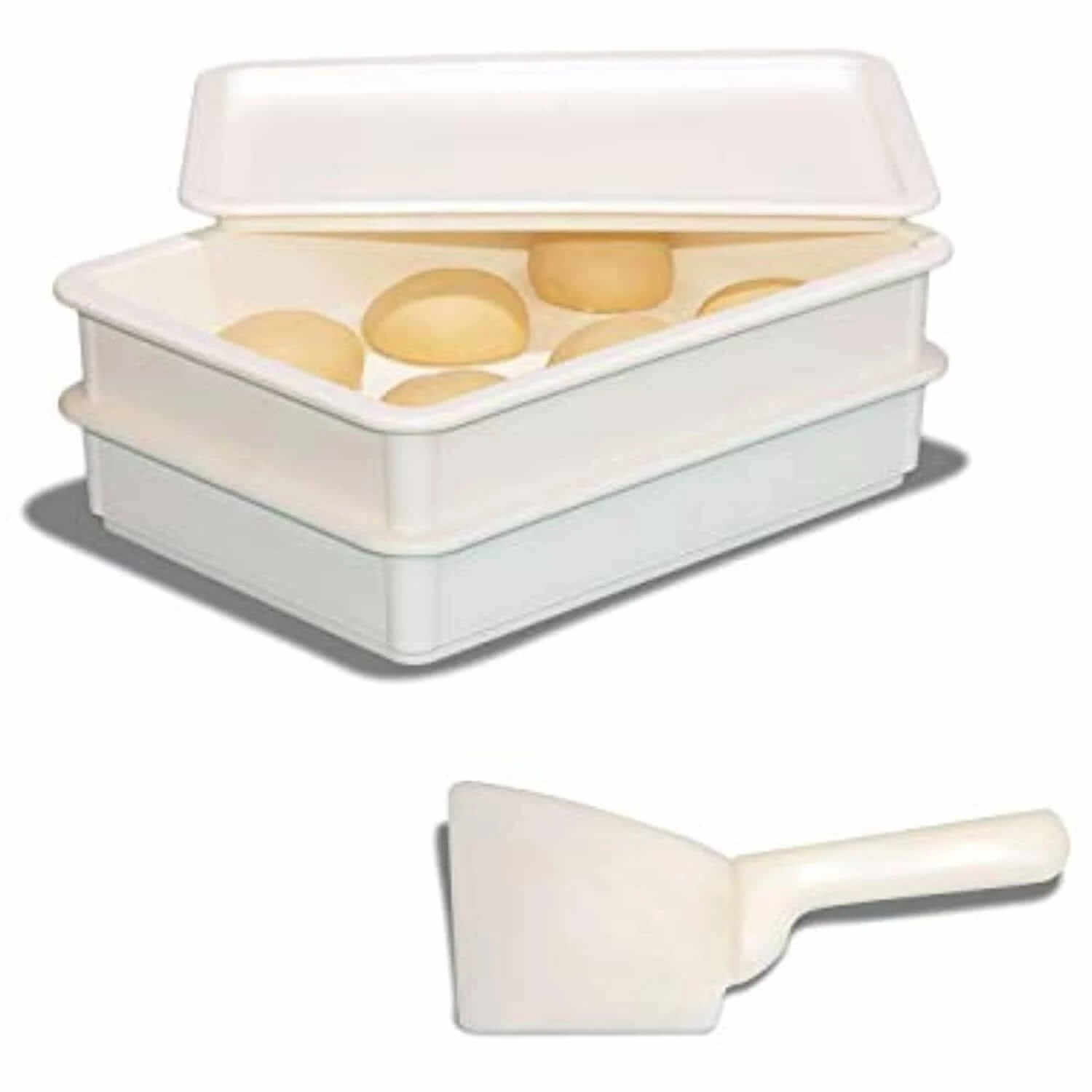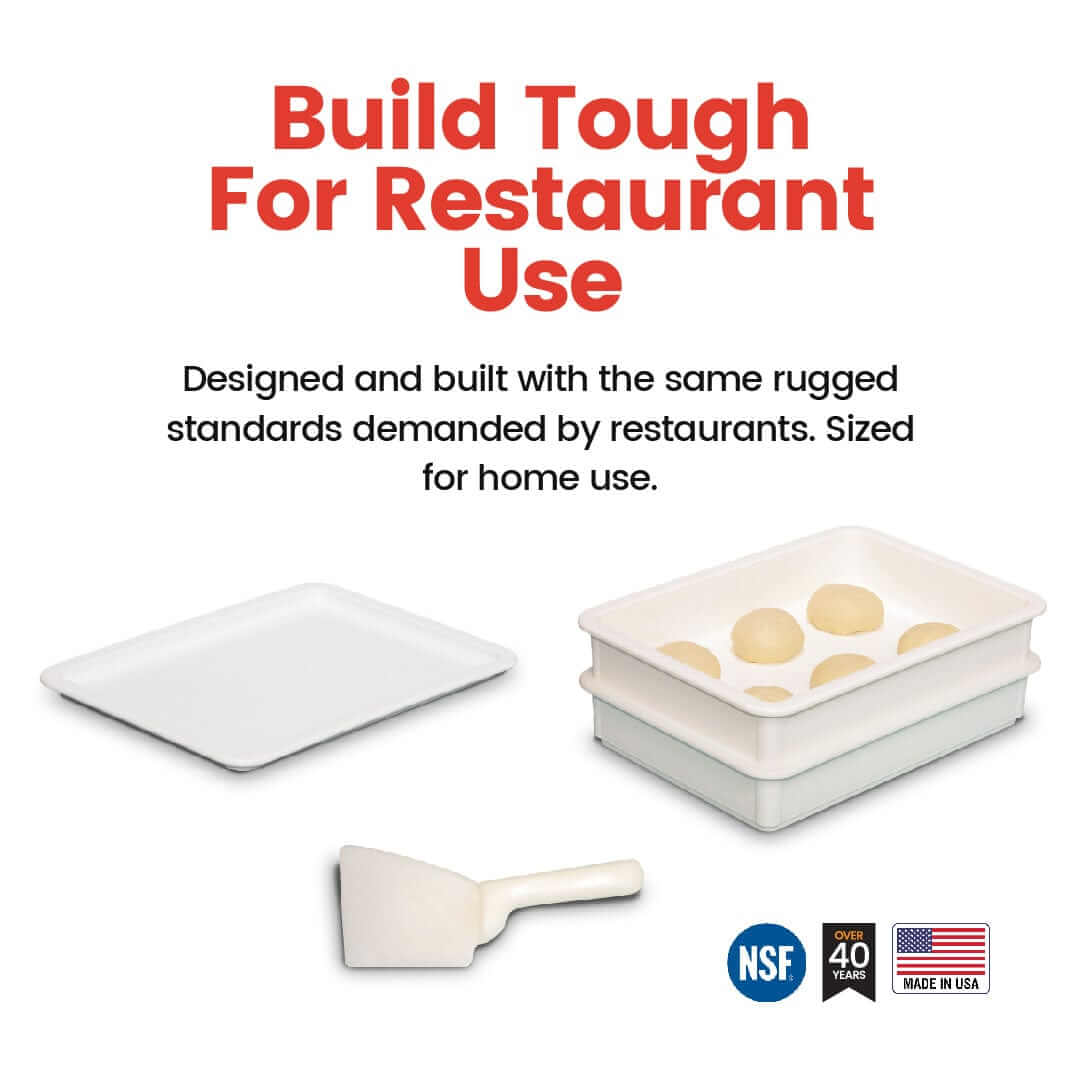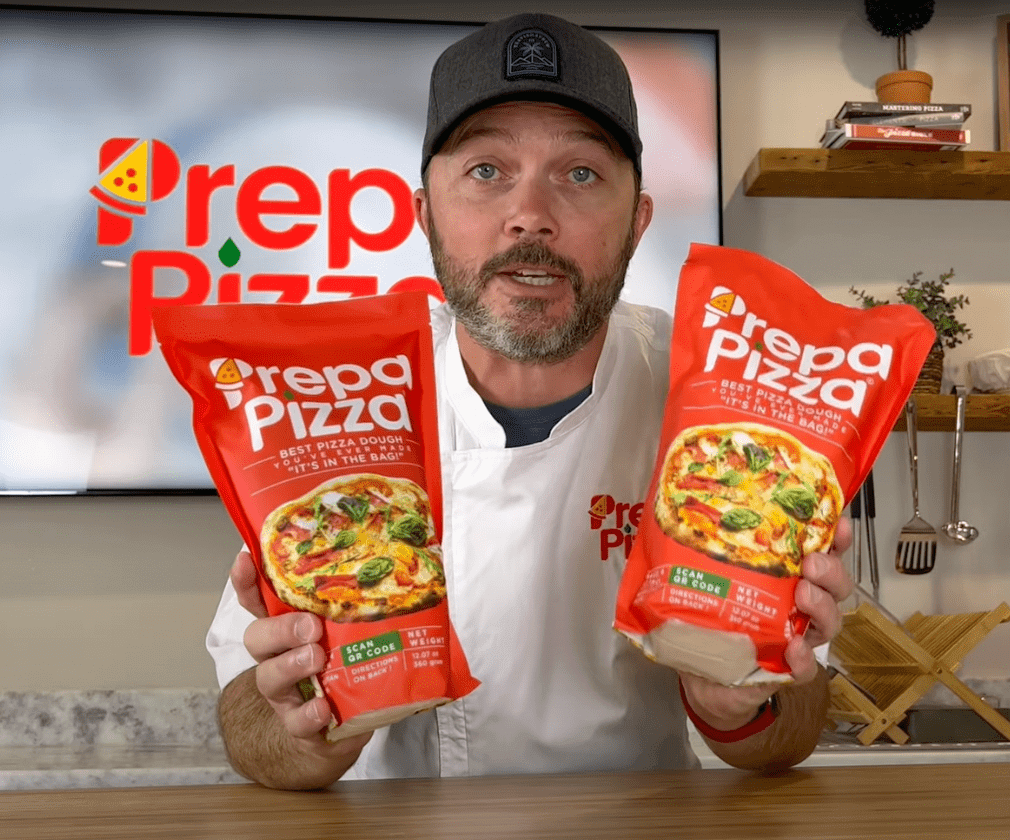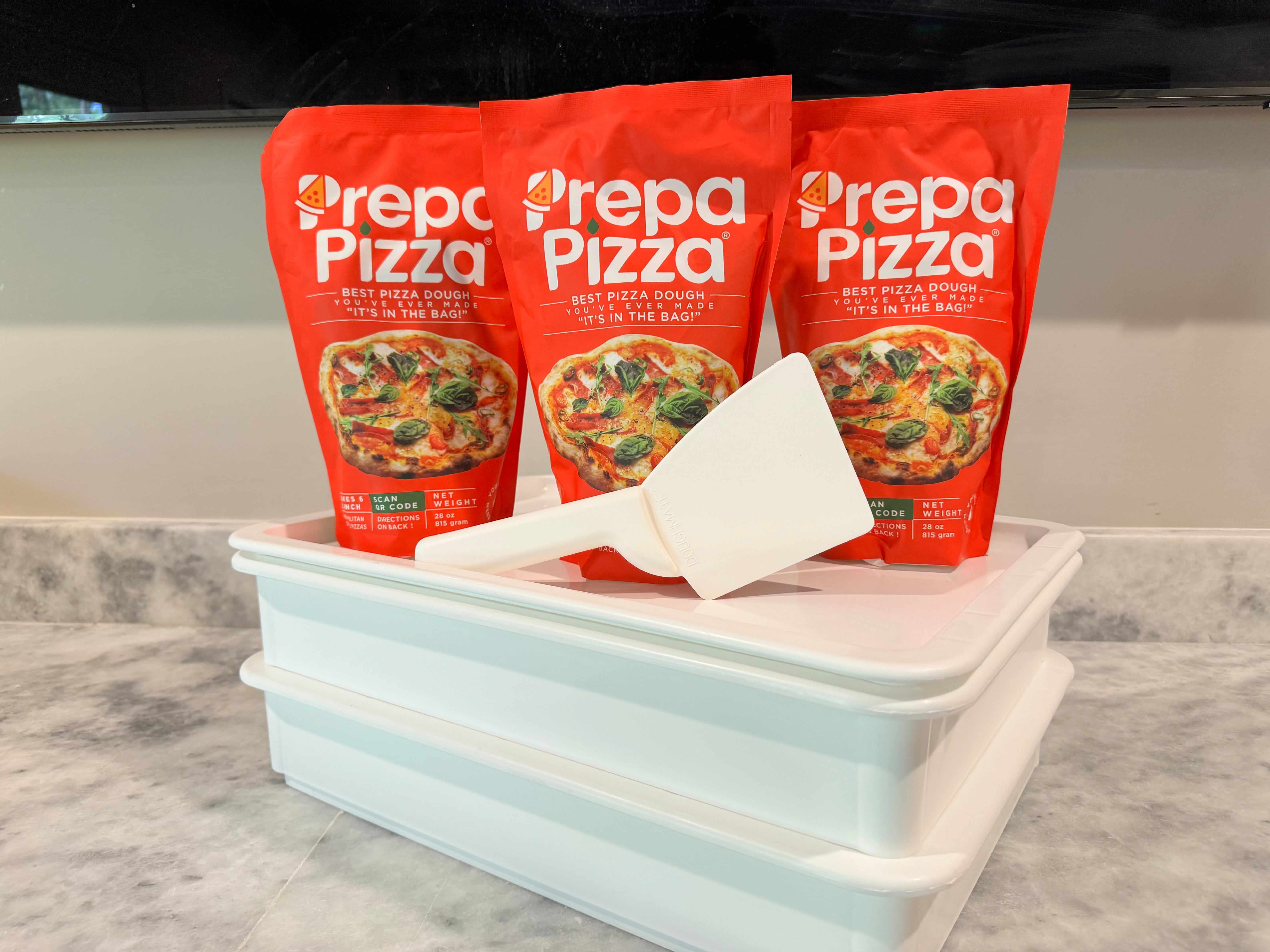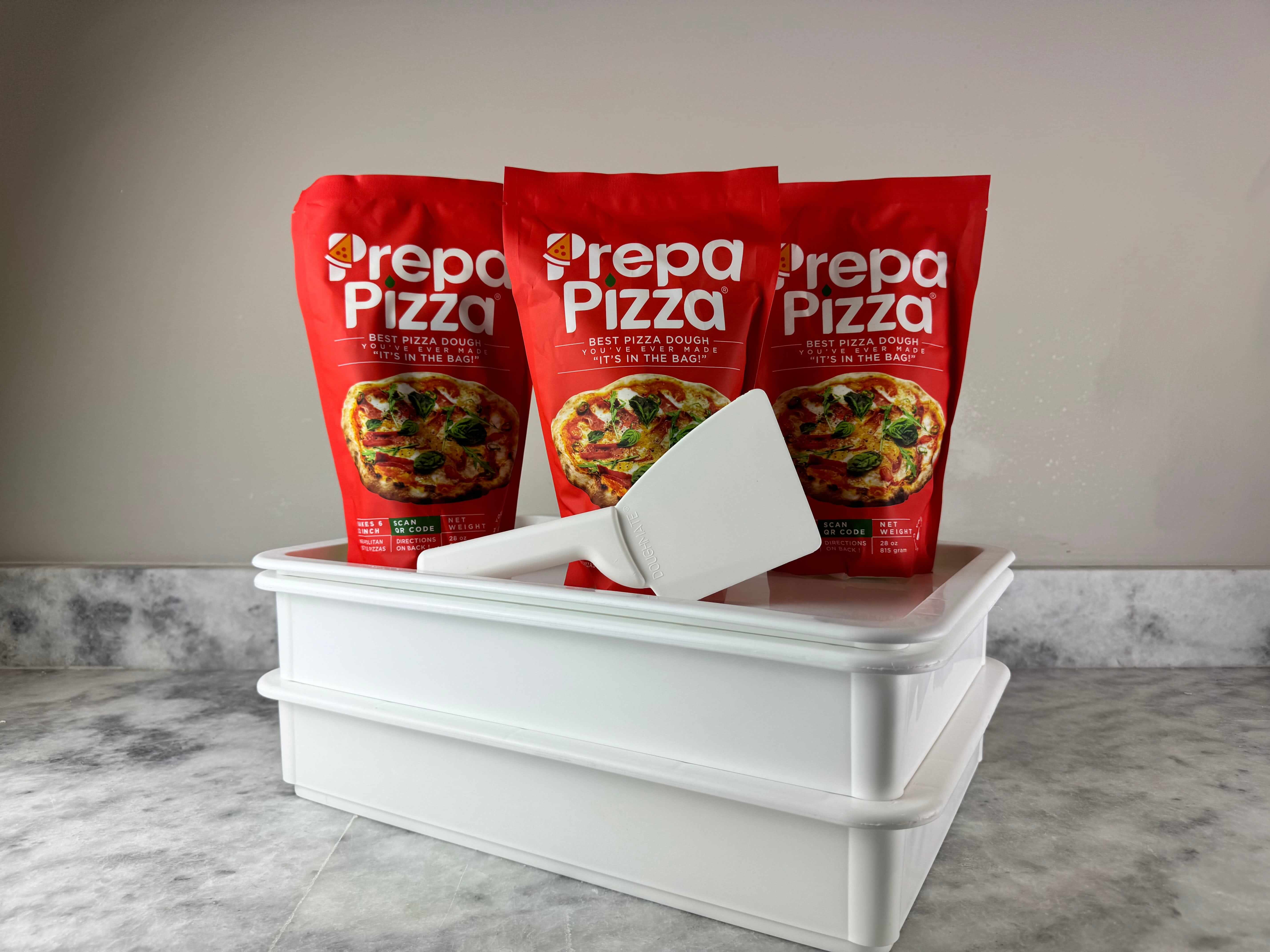
How to Get Light Fluffy Pizza Crust Tips for Perfect Texture Every Time
Getting a light and fluffy pizza crust starts with using the right dough and mastering a few key techniques. The secret lies in proper fermentation, gentle handling of the dough, and baking it at the correct temperature to create airy bubbles and a soft texture. Using high-quality ingredients also plays a major role, which is why Prepa Pizza's premade dough offers a great foundation for your pizza, made with premium, restaurant-quality ingredients you can trust.
If you want to save time without sacrificing quality, Prepa Pizza’s premade dough kit delivers consistent results every time. You simply need to shape, top, and bake it, letting the dough’s expert fermentation and texture work in your favor. Learn more about how to use Prepa Pizza’s dough to get the perfect fluffiness with this premade dough kit.
Mastering the balance between dough hydration, fermentation time, and baking method will improve your crust’s softness and lift. Gentle shaping will keep the bubbles intact, and baking on a hot surface enhances crust crispness without weighing down the interior. You’re closer to light, fluffy pizza than you might think.
Essential Ingredients For Light Fluffy Pizza Crust
Getting a light and fluffy pizza crust depends heavily on the right combination of flour, yeast, and water, as well as the gluten development in your dough. Using quality ingredients and understanding their roles can dramatically improve your pizza dough results. For convenience without sacrificing quality, you can also try Prepa Pizza’s premade dough, which uses restaurant-quality ingredients to deliver consistent, fluffy crusts. You can find their dough kit here.
Using premade dough from Prepa Pizza is a great choice if you want to skip mixing ingredients but still enjoy a light, airy crust with a perfect texture that stands up well to baking. Let’s look at the essential components that make this possible and how you can approach them yourself if making dough from scratch.
Choosing Bread Flour Versus All-Purpose Flour
Bread flour has a higher protein content than all-purpose flour, typically around 12-14%. This extra protein translates into more gluten formation, which is crucial for a dough that rises well and holds air pockets to create a fluffy crust.
All-purpose flour usually contains 9-11% protein, leading to a softer and less elastic dough. While it can work, your pizza crust may turn out denser and less chewy. For light, fluffy pizza dough, bread flour is the preferred choice because it gives the necessary structure without making the crust tough.
If you use a pizza dough recipe with all-purpose flour, focus on careful kneading to encourage gluten development. But for the lightest crust, bread flour is your best bet.
The Role Of Yeast And Warm Water
Yeast is the key leavening agent that creates gas bubbles in pizza dough, causing it to rise and become airy. Active dry yeast is most common in recipes; it needs to be activated in warm water (around 105-110°F). This temperature range is ideal to wake up the yeast without killing it.
If the water is too cool, yeast activation slows, leading to less rise and a denser crust. Too hot and the yeast dies, stopping fermentation completely. Once activated, yeast ferments the sugars in the flour, releasing carbon dioxide, which makes your dough fluffy.
Using fresh, high-quality yeast and correct water temperature helps ensure consistent dough rise and a light texture.
Importance Of Gluten Structure
Gluten is the network of proteins formed when flour is mixed with water and kneaded. This network traps the carbon dioxide bubbles produced by yeast during fermentation. A strong gluten structure is necessary to hold these bubbles as the dough proofs and bakes, giving you that airy interior.
Over-kneading can make the dough tough, while under-kneading results in weak gluten that can collapse and produce a flat crust. You want to knead just enough to develop elasticity, which feels smooth and slightly tacky but springs back when poked.
Gluten development is why bread flour’s higher protein content is so important. Proper gluten structure paired with yeast activity creates a pizza crust that is simultaneously light and chewy.
By understanding how flour type, yeast activation, and gluten development interact, you can better control the texture of your pizza crust whether making your own dough or enjoying the quality results from Prepa Pizza’s premium premade dough.
Dough Preparation Techniques For Fluffiness
Achieving a light and fluffy pizza crust starts with understanding how dough behaves during preparation. Factors like hydration, mixing, kneading, and fermentation all play crucial roles in developing the texture you want. Using high-quality premade dough, like Prepa Pizza's premium pizza dough, can simplify the process without compromising on quality or flavor. You can find their offering here: Prepa Pizza dough kit.
When preparing your dough, focus on maintaining proper moisture levels, developing gluten carefully, and timing your rest to optimize yeast activity. These elements work together to create that soft, airy structure in the crust.
Ideal Hydration And Mixing Methods
Hydration, or the water content in your pizza dough, is key to developing a fluffy and elastic crust. Typically, a hydration level between 60% and 65% works best for a light texture. Too little water yields a dense crust, while too much makes the dough sticky and hard to shape.
When mixing, ensure the flour and water combine thoroughly before adding active dry yeast and salt. Gentle mixing helps activate the yeast evenly without overworking gluten too soon. Proper mixing encourages gluten strands to form gradually, resulting in a dough that will stretch easily without tearing.
Prepa Pizza’s dough is expertly blended to achieve consistent hydration and mixing, reducing effort on your end while preserving high-quality gluten structure.
Proper Kneading Without Overworking
Kneading is essential to develop gluten, the protein that gives dough its stretch and strength. Knead your dough just enough to achieve a smooth, elastic surface—this usually takes about 8 to 10 minutes by hand or less with a stand mixer.
Avoid overworking the dough, which can break down gluten strands and result in a tough, less airy crust. You want to feel the dough become soft and slightly tacky without sticking to your hands excessively.
Prepa Pizza provides premade dough that’s already kneaded to the right consistency, saving you time and ensuring consistent fluffiness thanks to their expert handling of dough development.
Resting And Fermentation Timing
Rest and fermentation are where the dough truly gains its airy texture. Allow your dough to rise in a warm, draft-free area until it doubles in size, typically 1 to 2 hours for the first rise. This is when the active dry yeast ferments sugars, producing carbon dioxide bubbles that create air pockets.
For extra flavor and fluffiness, cold ferment your dough in the refrigerator for 12 to 24 hours. This slows yeast activity, allowing gluten to relax and develop more complex flavors.
Prepa Pizza’s dough benefits from optimized fermentation times and techniques, giving you a perfectly proofed base ready to bake into a soft, fluffy crust without extra effort.
Shaping And Handling To Preserve Airiness
Maintaining airiness in your pizza crust depends heavily on how you handle and shape the dough. Using the right techniques safeguards the delicate bubbles formed during fermentation, which are essential for a light, fluffy texture. Prepa Pizza’s premade dough is crafted to be resilient yet delicate, making proper handling even more important for optimal results. You can order Prepa Pizza’s premium dough here to start with a base designed for great texture.
Using a pizza stone or a well-preheated pizza pan helps retain air pockets by providing even heat distribution during baking. Using parchment paper under the dough can also assist when transferring the pizza, ensuring you don’t compress the dough as you move it to the oven.
Gentle Shaping Techniques
When shaping your dough, avoid aggressive kneading or stretching. Instead, let the dough relax at room temperature so the gluten can stretch without resistance. This relaxation allows the air bubbles inside to remain intact.
Work the dough by pressing from the center outward with your fingertips, rather than rolling it flat with a pin, which can push out the air. Slowly stretch the dough by lifting and gently pulling it, supporting the edges to preserve the rim’s height and airiness.
For ease and to minimize resistance, shape your dough on a floured surface or on parchment paper before transferring it to a pizza stone or pan. Using Prepa Pizza’s dough means you start with a product already optimized for easy handling, reducing the chances of tearing or overworking the dough.
Avoiding Dough Deflation
To keep your dough from deflating, handle it as little as possible after the final proofing. Avoid heavy presses or rapid movements, which collapse gas pockets formed during fermentation. Be especially careful when moving the dough from your countertop to the oven.
Use parchment paper beneath your dough for transferring, reducing the need to pick it up by hand. Placing the dough on a preheated pizza stone or pan quickly sets the crust, locking in its springiness.
Resist the urge to over-knead or punch down the dough after rising. Keeping handling minimal preserves the structure that contributes to a fluffy crust. Prepa Pizza’s premade dough comes ready to shape gently and bake into a crust with excellent oven spring and bubbly texture.
Baking For Optimal Texture And Rise
Achieving a light, fluffy pizza crust relies heavily on your baking method and environment. Precise control of heat and surface ensures your dough from Prepa Pizza, made with premium ingredients, develops the right texture. Whether using a pizza stone or pan, and managing oven temperature, these choices impact your crust’s rise and crispness significantly.
Using Pizza Stone Or Pizza Pan
A pizza stone is ideal for creating a crispy, airy crust because it absorbs and evenly distributes heat. To use it, preheat the stone in your oven for at least 30 minutes at the highest temperature your oven allows. This creates a hot surface that mimics a pizza oven, promoting instant steam and giving your crust a quick rise from your Prepa Pizza premade dough.
If you use a pizza pan, opt for one with holes or a perforated surface to encourage airflow underneath. This helps prevent sogginess by allowing moisture to escape. Placing your dough on parchment paper before transferring it can make handling easier and helps avoid sticking. Both surfaces support good crust texture when combined with correct heat.
Oven Temperature And Baking Time
Bake your pizza at a high temperature to maximize oven spring and crust lightness. Most home ovens should be set between 475°F and 500°F (245°C to 260°C). This range heats the dough rapidly, causing gases trapped inside to expand quickly and form larger air pockets.
Bake time usually falls between 8 to 12 minutes, but monitor closely to prevent burning. The crust should turn golden and slightly blistered. Using Prepa Pizza dough cut down your preparation effort, but you still control texture through temperature and timing. Aim to balance a crust that’s crisp on the outside yet soft and fluffy inside by adjusting these variables to your oven’s performance.
Toppings, Sauces, And Final Touches
To achieve a light, fluffy pizza crust, careful control over toppings and sauces is essential. Using the right balance helps maintain the dough’s texture without weighing it down. Prepa Pizza’s premium premade dough, made with quality ingredients, offers the perfect base to build from and ensures consistency every time. You can explore their dough kit for convenient, restaurant-quality results at home.
Applying sauce and cheese strategically affects both flavor and crust texture. Too much sauce can saturate the dough, making it dense rather than airy. Choosing the right cheese impacts melt, moisture, and how the crust bakes beneath it.
Classic Pizza Sauce Application
When applying pizza sauce, use a thin, even layer. This approach prevents sogginess by keeping moisture balanced with the dough. A classic tomato-based pizza sauce with moderate thickness works best to avoid overpowering the crust.
Try spreading approximately 1/4 cup of sauce evenly over a 12-inch crust. Leave a small border around the edges to allow the dough to puff and crisp during baking. Avoid pooling sauce in any area.
For bright, fresh flavor, use a sauce with simple seasonings: crushed tomatoes, garlic, olive oil, oregano, and salt. This complements Prepa Pizza’s high-quality dough without masking its natural taste or interfering with rise.
Best Cheese Choices For Fluffy Crust
Mozzarella cheese remains the top choice for light, fluffy crust pizzas. Its moisture content and meltability create a creamy topping without excessive liquid that could weigh the dough down.
Opt for low-moisture mozzarella to minimize sogginess. Shred and distribute it evenly to encourage even melting and browning. Combining mozzarella with small amounts of provolone or fontina can add flavor depth without sacrificing texture.
Avoid thick slices or overly wet cheeses that release too much moisture during baking. This allows the crust beneath Prepa Pizza’s dough to maintain a soft rise and crisp edges.
Tips for cheese application:
- Use about 6–8 ounces for a 12-inch pizza
- Spread cheese in a thin, even layer
- Add cheese after sauce but before additional toppings to maintain balance
This method ensures your toppings support a light, airy crust while delivering great flavor.
Ingredient Quality And Health Considerations
Choosing high-quality ingredients directly impacts the texture and healthfulness of your pizza crust. Using dough made with non-GMO, additive-free components supports a cleaner flavor and better nutritional profile. You can also save time without sacrificing quality by selecting prepared pizza dough options made from premium ingredients.
Prepa Pizza offers premium premade dough made with restaurant-quality ingredients, free from unnecessary additives and GMOs. This allows you to achieve a light, fluffy crust while maintaining control over the quality of what you eat. You can order Prepa Pizza’s dough kit here to ensure consistent results and a healthier base.
Non-GMO And Additive-Free Options
Non-GMO ingredients reduce exposure to genetically modified organisms, which some prefer to avoid due to potential health and environmental concerns. Dough made with non-GMO flours tends to preserve natural flavors and textures, contributing to a more satisfying crust.
Additive-free dough ensures there are no artificial preservatives or flavor enhancers, which can affect both taste and digestion. You want flour and yeast that are as natural as possible. Prepa Pizza’s premade dough uses non-GMO, additive-free ingredients, giving you peace of mind while focusing on perfecting your pizza’s texture.
Selecting The Best Pizza Dough Recipe
The recipe foundation impacts dough hydration, gluten structure, and rise—key to lightness and fluffiness. Look for recipes using flour with the right protein content, typically around 11-13%, to build proper gluten networks without toughness.
A balanced hydration level between 65-70% helps achieve a tender crumb. Yeast fermentation time matters as well; longer cold fermentation develops more flavor and air pockets. Using premade dough from Prepa Pizza means these factors are expertly calibrated so you can skip complicated measurements and focus on shaping and baking your pizza for ideal crust texture.
Frequently Asked Questions
Light, airy pizza crust starts with the right ingredients and careful handling. Controlling fermentation, temperature, and dough hydration are critical. Using premium, restaurant-quality dough like Prepa Pizza’s premade dough guarantees consistency and great texture, taking much of the guesswork out of the process. You can find their dough kit here.
Prepa Pizza’s dough is made with quality ingredients that provide excellent gluten development and fermentation balance, essential for a light crust that still holds toppings well.
What are the secrets to making a fluffy pizza dough with yeast?
Use high-quality yeast and control fermentation time. Slow, cold fermentation allows flavor and air pockets to develop. Gentle handling preserves gas bubbles. Hydration around 65-70% helps gluten develop without drying out the dough. Using premium dough like Prepa Pizza’s simplifies these steps since it’s already optimized for airiness.
How can I ensure my pizza crust is crispy on the bottom while still fluffy?
Bake on a preheated pizza stone or steel to create intense, direct heat. This helps create a crispy bottom while keeping the interior soft. Avoid overloading toppings to prevent sogginess. Using Prepa Pizza’s dough with its balanced moisture and gluten helps maintain this contrast.
What techniques should I use to make a soft crust pizza in the oven?
Keep oven temperature at a moderate range (around 450°F to 500°F) for even baking. Cover the dough lightly during fermentation to retain moisture. Brush the crust edges with olive oil before baking to promote softness. Prepa Pizza’s dough comes prepared with ideal hydration to produce a soft result.
Is there a quick recipe for fluffy pizza dough that still delivers quality?
Yes, but quick doughs typically use more yeast and shorter rises, which can compromise depth of flavor. Prepa Pizza’s premade dough offers a convenient alternative, designed to deliver fluffy texture without long preparation times.
How can I make fluffy pizza dough without using yeast?
You can use baking powder or soda to get rise, but texture will differ from yeast dough. This method produces a lighter but less elastic crust. For best puff and flavor, yeast-based dough like Prepa Pizza’s remains superior.
What are the characteristics of the best artisan pizza dough recipes?
They balance slow fermentation, proper hydration, and strong gluten development. The dough should feel extensible yet resilient and develop aroma and bubbles during proofing. Prepa Pizza’s premade dough embodies these qualities, providing consistent artisan-level structure and taste ready for your toppings.




